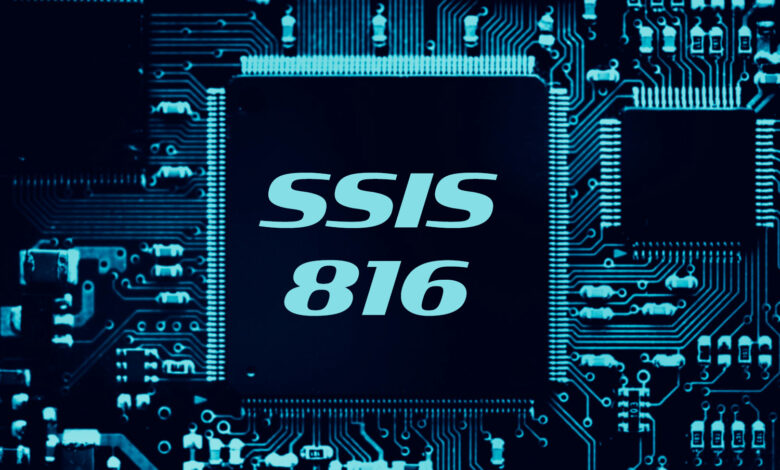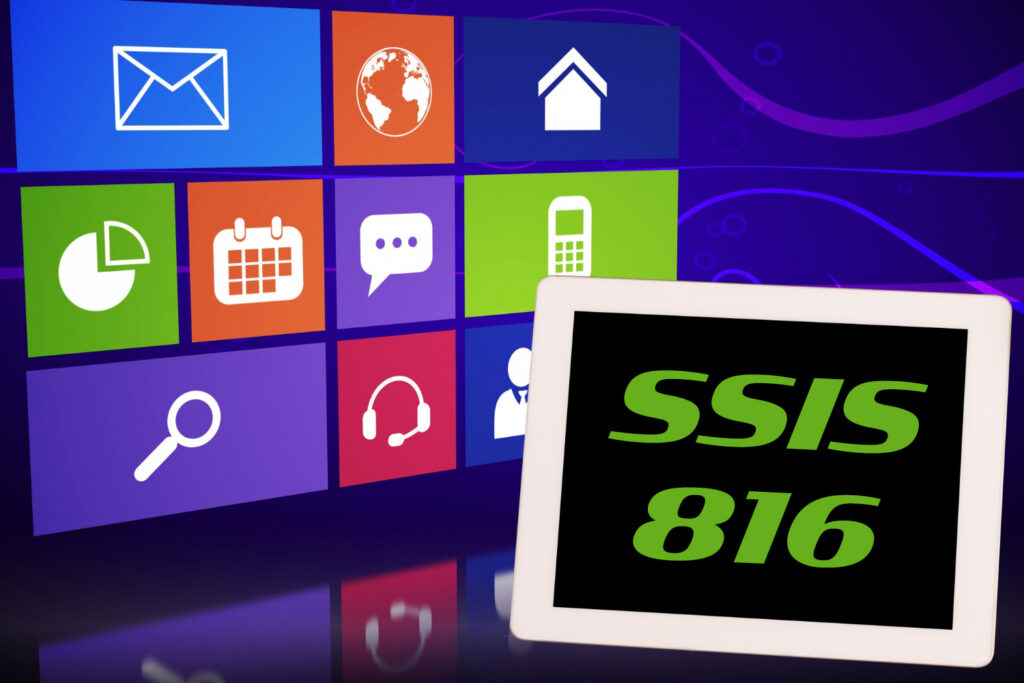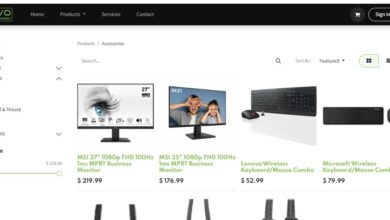
Introduction
ssis 816, an abbreviation for SQL Server Integration Services version 816, is a crucial component in the realm of data integration. As organizations grapple with vast amounts of data from disparate sources, SSIS provides a robust platform for managing and transforming data to meet diverse business needs.
Table of Contents
Understanding SSIS
SQL Server Integration Services (SSIS) is a versatile data integration tool developed by Microsoft. It allows users to design and execute workflows that extract, transform, and load data from various sources to destinations such as databases, data warehouses, or even cloud platforms. Since its inception, SSIS has become a cornerstone in the Microsoft Data Platform, offering comprehensive solutions for ETL (Extract, Transform, Load) processes and beyond.
Key Features
SSIS 816 builds upon the strong foundation laid by its predecessors, introducing several enhancements and new features to streamline data integration tasks. Some of the key features of SSIS 816 include advanced data transformation capabilities, improved performance optimizations, enhanced connectivity options, and tighter integration with other Microsoft technologies such as Azure services.
User Interface Overview
The user interface of SSIS 816 is designed to provide users with a seamless experience when designing and managing data integration workflows. The interface comprises various components, including the Solution Explorer, Toolbox, and Control Flow Designer, each serving a specific purpose in the development process. Users can customize the layout and appearance of the interface to suit their workflow preferences, making it easier to navigate and manipulate SSIS projects.
Creating SSIS Projects
Getting started with SSIS-816 involves creating new projects within the SSIS environment. This process begins by selecting the appropriate project template and configuring project settings such as target SQL Server versions, deployment options, and security settings. SSIS 816 offers a range of templates to choose from, each tailored to different data integration scenarios, ensuring that users can quickly start building their solutions without unnecessary overhead.
Features and Capabilities of SSIS 816
Scalability and Performance

One of the standout features of SSIS 816 is its unparalleled scalability and performance. Whether dealing with small-scale data transformations or large-scale ETL processes, SSIS 816 delivers blazing-fast performance, ensuring minimal latency and maximum throughput.
Enhanced Data Integration
SSIS 816 boasts a comprehensive set of tools and functionalities for seamless data integration. With support for a wide range of data sources and destinations, including relational databases, cloud storage, and big data platforms, SSIS 816 empowers users to effortlessly orchestrate complex data workflows.
Advanced Security Measures
Security is paramount in today’s data-driven world, and SSIS 816 rises to the challenge with advanced security measures. From robust encryption algorithms to granular access controls, SSIS 816 ensures that your data remains protected at all times, mitigating the risk of unauthorized access or data breaches.
Installation and Setup Process
Getting started with SSIS 816 is a breeze, thanks to its intuitive installation and setup process. Whether deploying on-premises or in the cloud, users can quickly configure SSIS 816 to suit their specific requirements, minimizing downtime and maximizing productivity.
Configuring SSIS 816
Once installed, configuring SSIS-816 is a straightforward affair. With a user-friendly interface and comprehensive documentation, users can easily fine-tune settings, configure connections, and optimize performance to meet their unique data integration needs.
Integration with Other Microsoft Tools

Compatibility with SQL Server
SSIS-816 seamlessly integrates with SQL Server, enabling users to leverage the full power of Microsoft’s flagship database platform. Whether performing data migrations, transforming raw data into actionable insights, or automating routine tasks, SSIS-816 and SQL Server work hand in hand to deliver unparalleled performance and reliability.
Collaboration with Azure Services
In addition to its integration with SQL Server, SSIS-816 also offers seamless collaboration with Azure services. Whether deploying SSIS packages to Azure Data Factory, leveraging Azure Blob Storage for data storage, or harnessing the scalability of Azure SQL Database, SSIS 816 empowers organizations to harness the full potential of the cloud.
Best Practices for Utilizing SSIS-816

Designing Efficient ETL Processes
When it comes to data integration, efficiency is key. To maximize the performance of SSIS 816, it’s essential to design efficient ETL processes that minimize overhead and optimize resource utilization. By following best practices such as parallel processing, data partitioning, and incremental loading, users can ensure that their SSIS workflows run smoothly and efficiently.
Monitoring and Troubleshooting Techniques
Even with the most well-designed ETL processes, issues can still arise. That’s why it’s crucial to implement robust monitoring and troubleshooting techniques to identify and address potential bottlenecks or errors. From logging events to setting up alerts and notifications, SSIS-816 provides a wealth of tools and features to help users proactively monitor and troubleshoot their data integration workflows.
Case Studies: Real-world Applications of SSIS 816
To illustrate the practical benefits of SSIS-816, let’s explore a few real-world case studies:
Case Study 1: Streamlining Data Migration
Company XYZ, a leading e-commerce retailer, leveraged SSIS-816 to streamline their data migration process, enabling them to seamlessly transition from their legacy systems to a modern cloud-based infrastructure.
Case Study 2: Automating Data Warehousing
Organization ABC, a multinational corporation, utilized SSIS-816 to automate their data warehousing processes, reducing manual intervention and improving overall efficiency.
Future Trends and Developments in SSIS 816

Looking ahead, the future of SSIS-816 looks bright, with Microsoft continuously innovating and enhancing the platform to meet the evolving needs of businesses worldwide. From AI-driven data integration to seamless integration with emerging technologies such as blockchain and IoT, SSIS-816 is poised to remain at the forefront of data integration for years to come.
Conclusion
In conclusion, SSIS-816 represents a paradigm shift in the field of data integration, offering unmatched scalability, performance, and security. Whether you’re a small business looking to streamline your data workflows or a large enterprise grappling with complex data challenges,SSIS-816 has the tools and capabilities you need to succeed in today’s data-driven world.
Frequently Asked Questions (FAQs)
Is SSIS 816 compatible with older versions of SQL Server?
Yes, SSIS 816 is designed to be backward compatible with older versions of SQL Server, ensuring a smooth transition for existing users.
Can I deploy SSIS packages to Azure Data Factory?
Absolutely! SSIS-816 offers seamless integration with Azure Data Factory, allowing you to deploy and manage your SSIS packages in the cloud.
Does SSIS 816 support real-time data integration?
While SSIS-816 primarily focuses on batch processing, it does offer support for real-time data integration through its Change Data Capture (CDC) feature.
How does SSIS 816 handle error handling and logging?
SSIS-816 provides robust error handling and logging capabilities, allowing users to track and troubleshoot errors with ease.
Is SSIS 816 suitable for small businesses?
Absolutely! SSIS-816 is designed to scale from small businesses to large enterprises, making it a versatile solution for organizations of all sizes.
If you found our content helpful don’t forget to share it on your social media: Twitter
More Articles: Home





One Comment